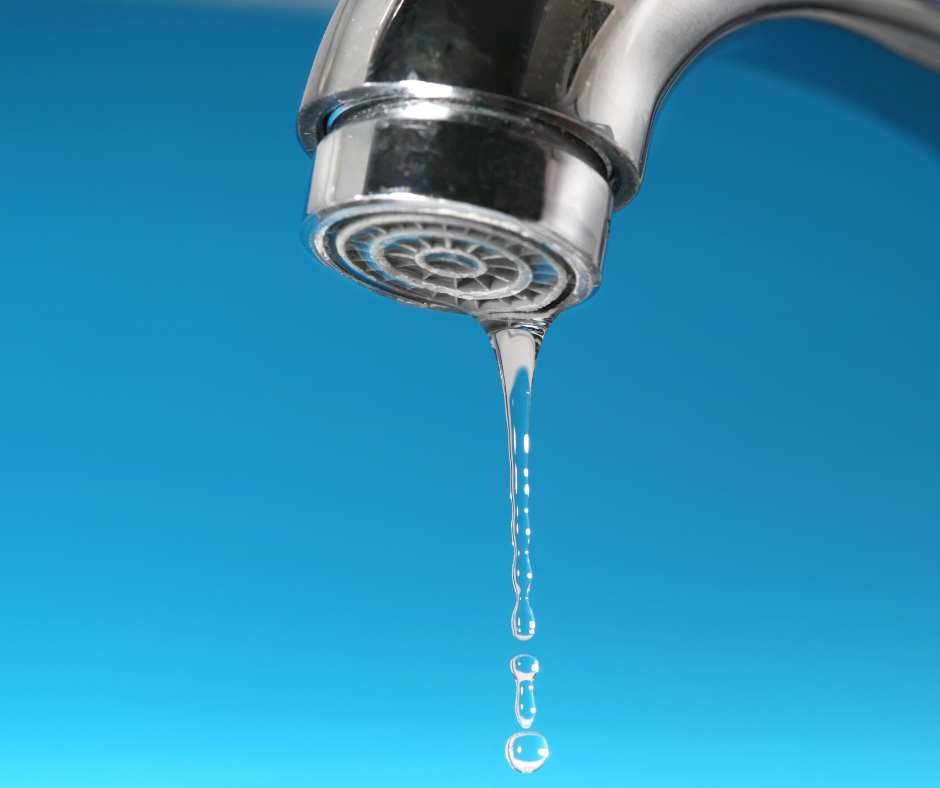Serving Nashville and the Middle Tennessee Area

Why Is My Water Pressure Low?
Water pressure is measured in PSI (pounds per square inch), and in most homes, a healthy range falls between 45 and 80 PSI. Once the pressure dips below this threshold—especially under 40 PSI—it begins to noticeably disrupt performance in your fixtures and appliances.
Symptoms can vary, but typically, you’ll start noticing weaker flow at sinks, longer rinse times in the shower, or delays in how quickly toilets refill after flushing. Appliances like washing machines and dishwashers may seem sluggish or less effective. Even outdoor tasks like watering the garden or washing the car can become more time-consuming when pressure is low.
If you’re unsure whether the pressure is low or you’re just imagining it, a water pressure gauge can help provide a clear answer. These inexpensive tools attach directly to an outdoor spigot and give you a numerical reading of your system’s pressure. For a more thorough assessment, a licensed plumber can perform diagnostics and spot underlying issues that a gauge won’t catch.
How Low Water Pressure Shows Up Around the House
Low water pressure doesn’t always appear the same way in every home—or even in every room. It can impact one isolated fixture or affect multiple areas at once. That distinction is important in identifying the true source of the problem.
Most people first notice it at the faucet or showerhead. The water simply doesn’t feel as powerful, and tasks like rinsing soap or filling pots start taking noticeably longer. Toilets may take more time to refill after flushing. Outside, hoses or sprinkler systems may not spray with their usual force. If you experience inconsistent flow, especially when multiple water-using devices are operating at the same time, that’s another red flag.
Over time, poor pressure can start to impact your lifestyle—making daily routines less efficient and even affecting the longevity or effectiveness of your appliances. That’s why it’s important not to ignore the issue or simply adjust to it. Investigating the cause early can save you money and prevent more serious plumbing problems down the line.
What Causes Low Water Pressure?
There are a number of possible reasons your water pressure may be lower than normal, and they generally fall into two categories: whole-home issues or localized fixture problems.
When the issue is widespread and impacts more than one area of the house, the problem is often related to your main water supply or plumbing infrastructure. In some cases, the issue might even start outside your home.
Municipal water supply disruptions are one of the more external causes. If your local water provider is performing maintenance or experiencing a high-demand event like firefighting or peak summer usage, the pressure delivered to your home could temporarily drop. There’s not much you can do here except wait for it to resolve.
Another common culprit is a malfunctioning pressure regulator. This device is usually located near the main water shutoff valve and is responsible for maintaining safe and consistent pressure. If the regulator fails, it can result in either too much or too little pressure throughout your home.
Partially closed main shutoff valves can also restrict flow. Whether due to recent plumbing work or accidental tampering, a valve that isn’t fully open can choke the water supply, leading to frustratingly weak flow at every faucet.
And then there are aging or corroded pipes. If your home’s plumbing system is several decades old, mineral buildup and rust can gradually clog pipes from the inside, narrowing the space through which water can travel. In this case, water might still reach your fixtures—but not nearly as quickly or forcefully as it should.
Localized Pressure Problems and Fixture-Specific Issues
On the other hand, if the problem seems confined to a single faucet or appliance, the issue is likely local and often easier to resolve.
Clogged aerators are a frequent cause of low flow at faucets and showerheads. Over time, mineral deposits and debris can collect in the fine mesh screen, reducing the water stream. Fortunately, this is one of the easiest problems to fix. Unscrewing the aerator, soaking it in vinegar, and giving it a good scrub can often restore full pressure in minutes.
Leaky pipes near the affected area can also cause localized drops in pressure. If water is escaping behind walls or under floors, it won’t make it to your faucet efficiently. Even a small leak can make a noticeable difference—and may be accompanied by damp spots, water stains, or increased water bills.
Sometimes, partially closed fixture valves are to blame. These are the small shutoff valves typically found under sinks or behind toilets. If these valves aren’t fully open, they can limit water flow without you even realizing it.
Lastly, the problem might lie in the fixture itself. Faucets and showerheads can wear out internally, leading to blockages or poor flow even if the rest of the system is working fine.
Can You Fix Low Water Pressure Yourself?
Depending on the source of the issue, you may be able to resolve low water pressure on your own with a few straightforward steps.
Start by cleaning the affected faucet or showerhead. Remove the aerator or spray nozzle, soak it in white vinegar to dissolve mineral buildup, and rinse it thoroughly before reinstalling. In many cases, this alone will restore normal flow.
Next, check all accessible shutoff valves—both the main one near your water meter and individual ones near fixtures. Ensure they are fully open to allow maximum water flow.
If the problem seems to affect the whole house and you suspect your regulator might be the issue, or if you see no obvious cause, it’s a good idea to call in a professional. Plumbing systems can be complex, and the last thing you want to do is create a new problem while trying to solve another.
In homes where water pressure is consistently low due to municipal supply limitations, a pressure booster pump may be a worthwhile investment. This system increases the pressure as water enters your home, giving you a more powerful flow throughout.
When It’s Time to Call Maynard Plumbing, Heating & Cooling
If you’ve gone through the basic troubleshooting steps and nothing has changed, your issue may run deeper than surface-level fixes can handle. At this point, professional diagnosis is your best bet.
You should call a licensed plumber if:
- Your entire home is experiencing low pressure, suggesting a systemic problem.
- You suspect a hidden leak, especially if your water bill has spiked or you’ve seen water damage.
- Your pipes are old or corroded, which may require re-piping or pipe replacement.
- Your pressure regulator has failed, as this is not a DIY repair.
- You’re considering a booster system installation, which needs to be correctly sized and professionally installed to avoid damage to your system.
Maynard Plumbing, Heating & Cooling has the experience and equipment to pinpoint the cause and provide reliable, long-term solutions. Whether you need a minor repair or a major upgrade, our team is here to help.
Wrap-Up: Don’t Let Low Water Pressure Slow You Down
Low water pressure might start as an annoyance, but it’s often a symptom of something more significant. Whether caused by old pipes, faulty valves, clogged fixtures, or a failing pressure regulator, the key to solving the issue is identifying the true cause—and acting before it worsens.
The good news? Most causes are fixable, and with the help of a plumbing expert, you can restore strong, consistent water flow throughout your home.
Call Maynard Plumbing, Heating & Cooling today to schedule a water pressure evaluation. We’ll find the problem, fix it fast, and help you enjoy full, refreshing flow in every room—just the way it should be.
Recent News
High-ROI Home Improvements in Nashville
Energy Efficiency & Indoor Air Quality Blueprint for Tennessee Homes
Home Heating and Cooling Options: Ductless, Mini Split, and Heat Pump Explained
The Ultimate Nashville Home Maintenance Calendar
Why Indoor Humidity Matters in Nashville — from Your Experts at Maynard Plumbing, Heating & Cooling
Why Does My Shower Squeal?
Why Is My AC Short Cycling?
Schedule Service


